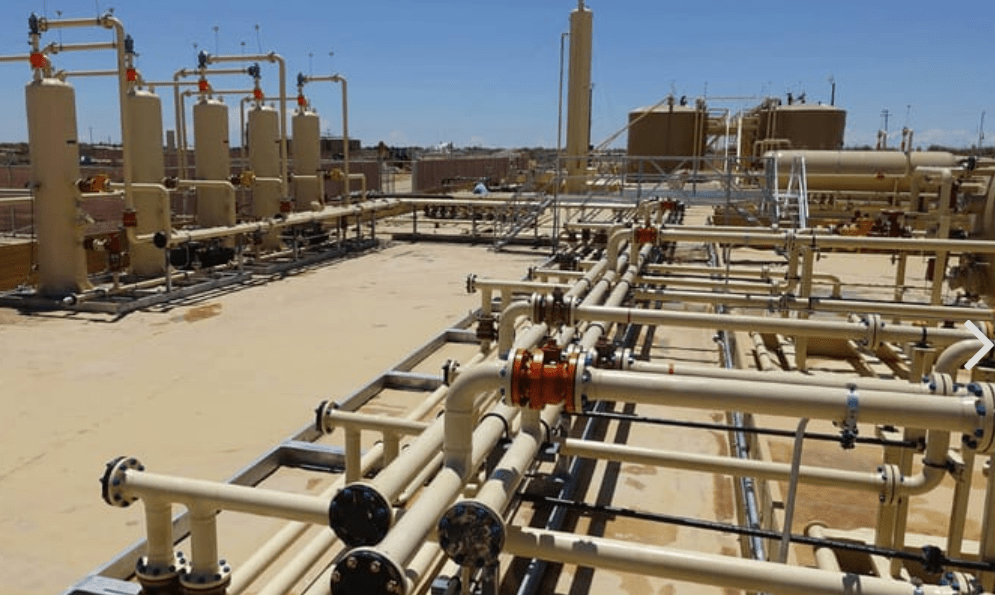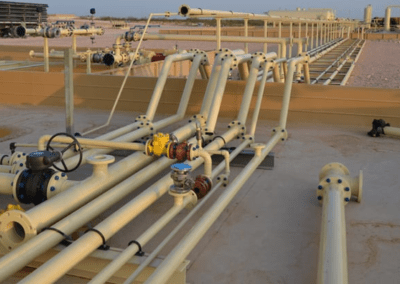API 570 Certified Inspector – Process Piping Inspections
API 570 Process Piping
API 570 code addresses the inservice inspection, repair, and alteration procedures for metallic, and Fiberglass reinforced plastic (FRP) piping systems and their associated pressure relieving mechanisms. These inspections are performed by an API Certified 570 inspector, utilizing Non-destructive testing measures and include a formal report for the facilities compliance records.
API 570 Inspectors
To properly interpret the standard, carefully carryout inspections and provide industry related reports, our inspectors must meet certain knowledge and experience requirements to be able to apply to become an API 570 certified Inspector through the American Petroleum Institute. Once approved, they must pass proctored examinations to gain entry into the industry as a certified inspector, something we pride ourselves on and hold with great integrity. Recertification must take place every 3 years in order to stay up to date with the latest industry standards and practices.
Your content goes here. Edit or remove this text inline or in the module Content settings. You can also style every aspect of this content in the module Design settings and even apply custom CSS to this text in the module Advanced settings.
API 570: Inspection Frequency
Inspection Frequency is determined by the type of circuit. Circuits are broken down into four different classes. Classes range from #1 to #4 where class #1 holds the greatest risk potential. The greater the risk potential, the greater the inspection frequency:
Class 1: Process piping is to receive Ultrasonic Thickness Measurements and Visual External Inspection NO LESS than once every 5 years, or the lesser of: 1/2 its calculated remaining life.
Class 2: Process piping is to receive Ultrasonic Thickness Measurements NO less than once every 10 Years, or the lesser of: 1/2 the calculated remaining life. Additionally, it is to receive Visual External Inspection NO LESS than once every 5 years.
Class 3: Process piping is to receive Ultrasonic Thickness Measurements NO less than once every 10 Years, or the lesser of: 1/2 the calculated remaining life. Additionally, it is to have a Visual External Inspection NO LESS than once every 10 years.
Class 4: Inspections Optional.

Consolidating Piping into Systems and Circuit Types
Process Piping is consolidated into classes depending on the type of circuit and its risk. Classes are given a numerical rank ranging from #1 to #4. Class #1 circuits are considered to hold the greatest risk, and therefore, must be inspected with greater frequency. Class #4 piping inspection is considered to be very low risk. because of this, its inspection is optional and is left to be determined by the Owner and/or User.
Pro-Tip:
For Piping that is in intermittent service, the inspection interval may be based off of the number of years of working service, rather than calendar years, provided that when sitting idle, the piping is:
- – Absent of all process fluids
- – Purged and sealed free from all corrosive catalysts, such as Inert gas. (API 570, 6.3.3)
Risk Based Inspections
Both Fixed Interval and RBI Inspections utilize the same inspection techniques at the time of inspection, however, they differ in their inspection frequency. Fixed Interval Inspections are based on the same Fixed interval as they’re classified per-API Standard. After each fixed interval inspection is performed, the interval resets at the same fixed period in the future. However, RBI inspections allow the inspection frequency to be altered to fit a risk prioritized inspection schedule where more risk creates a more frequent inspection schedule, while less risk means a lesser frequency inspection schedule.
Advantages of Risk Based Inspections
Risk based inspection (RBI) is determined by performing a risk based analysis, allowing the inspection interval to be set outside of the fixed interval of inspection determined by the API Standard. This allows inspection schedules to be developed around prioritizing high-risk components, and mitigating the inspection of low risk components. RBI can be very cost effective, allowing more convenient inspection schedules built around a facility’s operation and processing pattern, while also reducing the probability of mechanical failures and equipment degradation. This is done by targeting higher risk variables for more frequent inspection, and lesser risk variables for less frequent inspection, saving money and time.

